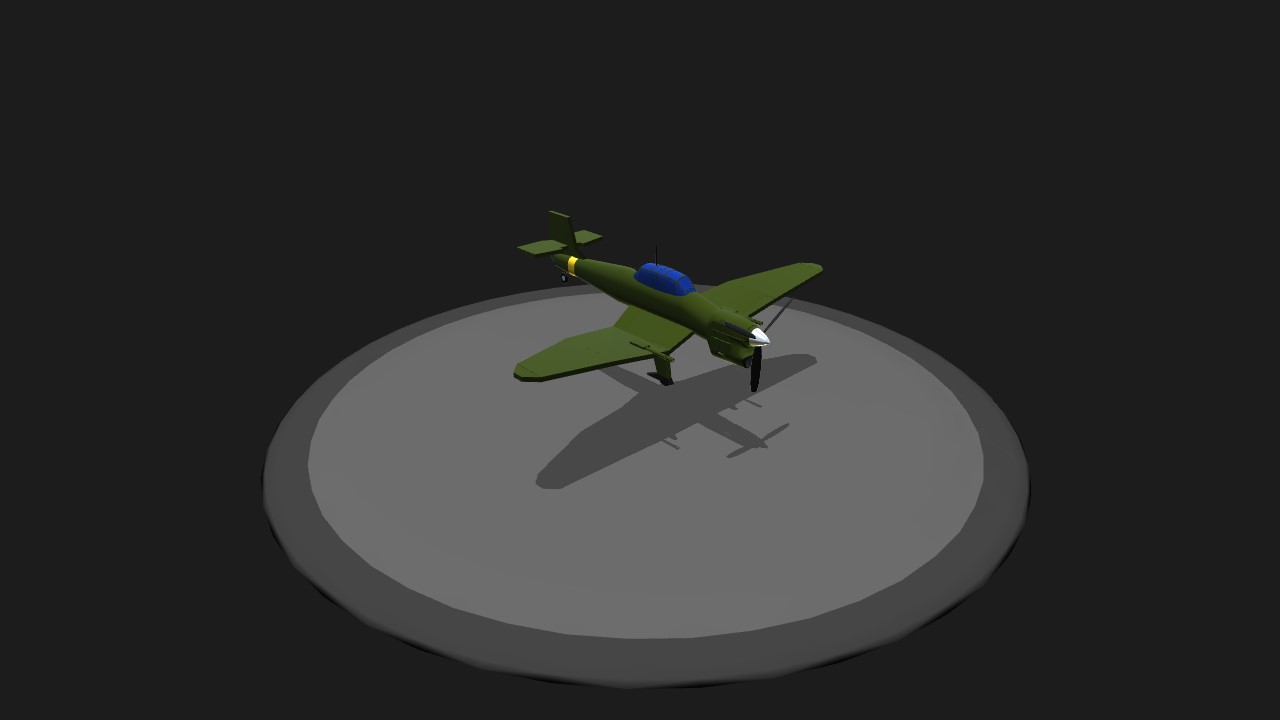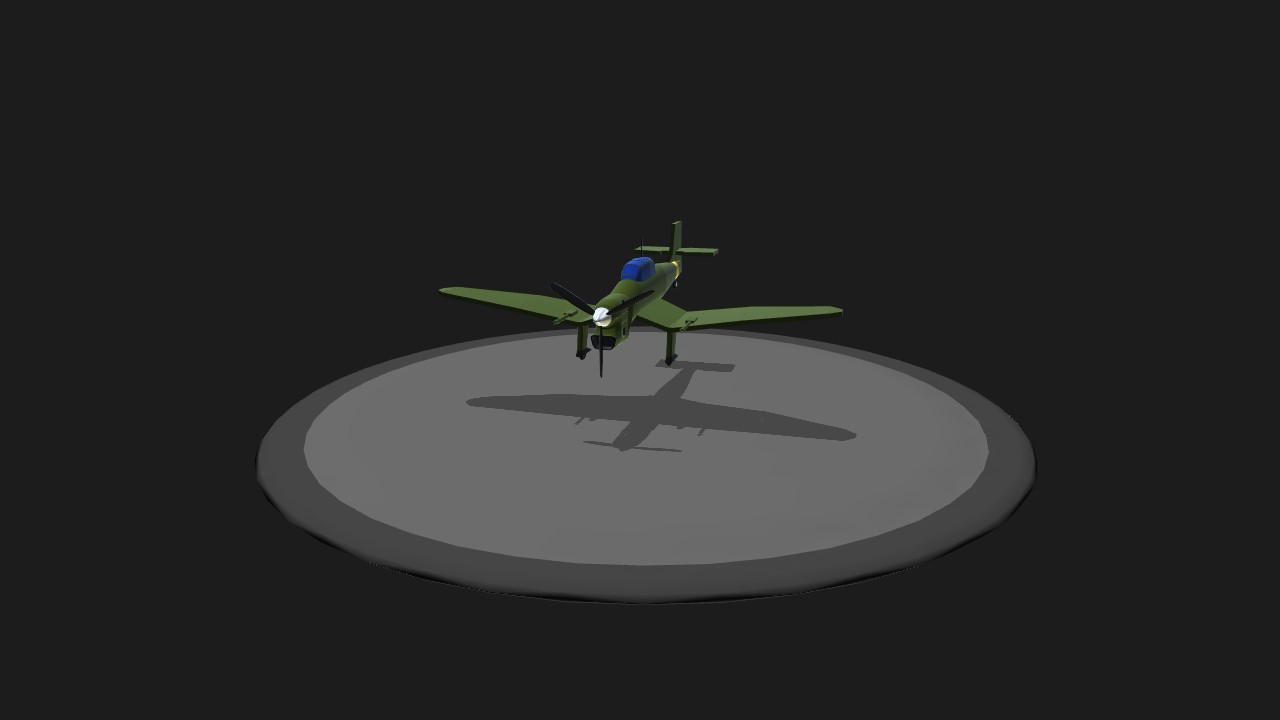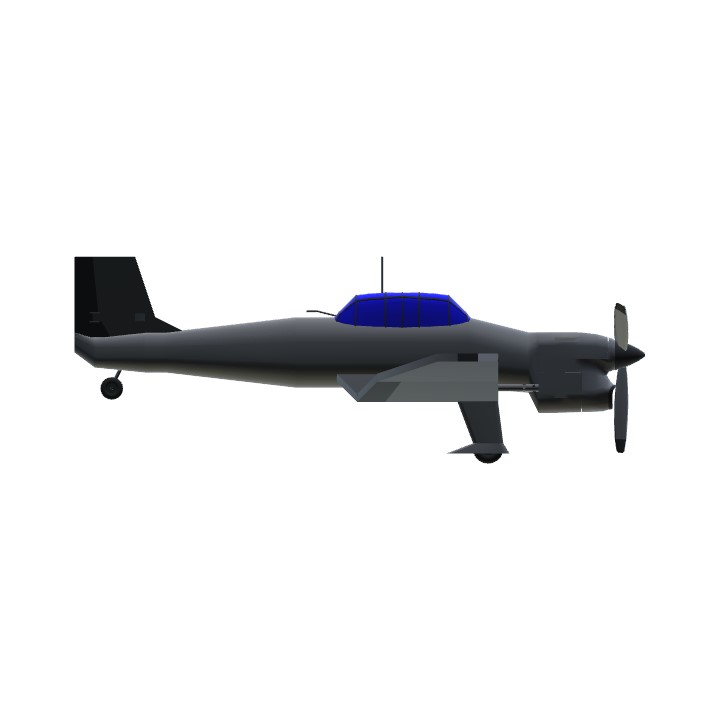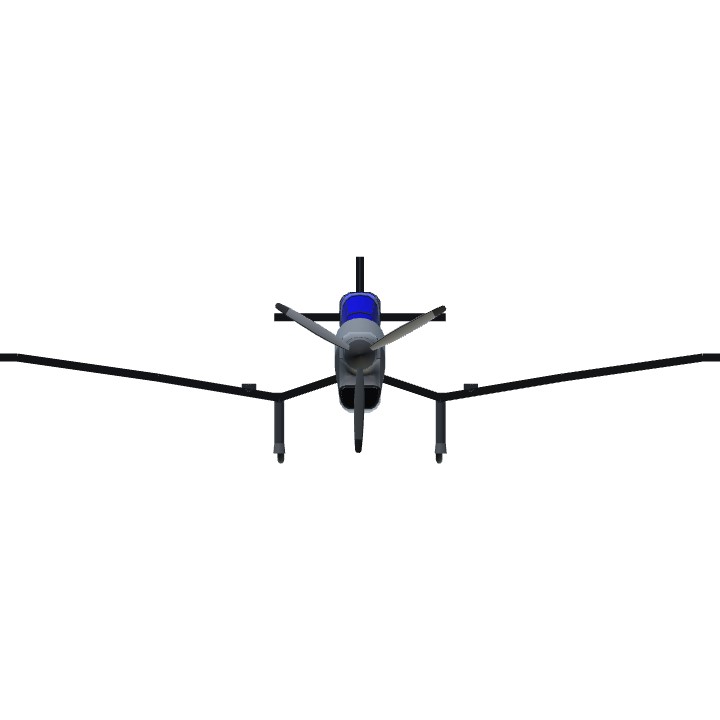I hope you enjoy this replica!
On the back of the fuselage, there're 2 wheels. Remove the one on the LEFT( looking from the back) of the aircraft.
I'm sorry I couldn't get a realistic to speed.
-Info from Wikipedia-
The Junkers Ju 87 or Stuka (from Sturzkampfflugzeug, "dive bomber") was a German dive bomber and ground-attack aircraft designed by Hermann Pohlmann and first flew in 1935. The Ju 87 made its combat debut in 1937 with the Luftwaffe's Condor Legion during the Spanish Civil War. It served the Axis forces in World War II.
The aircraft was easily recognisable by its inverted gull wings and fixed spatted undercarriage. Upon the leading edges of its faired main gear legs were mounted the Jericho-Trompete ("Jericho trumpet") wailing sirens, becoming the propaganda symbol of German air power and the blitzkrieg victories of 1939–1942. The Stuka's design included several innovative features, including automatic pull-up dive brakes under both wings to ensure that the aircraft recovered from its attack dive even if the pilot blacked out from the high g-forces.
The Ju 87 operated with considerable success in the close air support and anti-shipping at the outbreak of World War II. It spearheaded the air assaults in the Invasion of Poland in September 1939 and the Norwegian Campaign the following year. In May 1940 the Ju 87s were crucial in the rapid conquest of the Netherlands, Belgium and France against all targets. Although sturdy, accurate, and very effective against ground targets, the Ju 87, like many other dive bombers of the war, was vulnerable to modern fighter aircraft. During the Battle of Britain a lack of manoeuvrability, speed and defensive armament meant that the Stuka required a heavy fighter escort to operate effectively.
Specifications
General Characteristics
- Created On iOS
- Wingspan 29.3ft (8.9m)
- Length 23.2ft (7.1m)
- Height 8.4ft (2.6m)
- Empty Weight 4,084lbs (1,852kg)
- Loaded Weight 4,772lbs (2,164kg)
Performance
- Horse Power/Weight Ratio 0.628
- Wing Loading 30.2lbs/ft2 (147.6kg/m2)
- Wing Area 157.9ft2 (14.7m2)
- Drag Points 2174
Parts
- Number of Parts 46
- Control Surfaces 8
- Performance Cost 236







@SimpleTechAndResearch